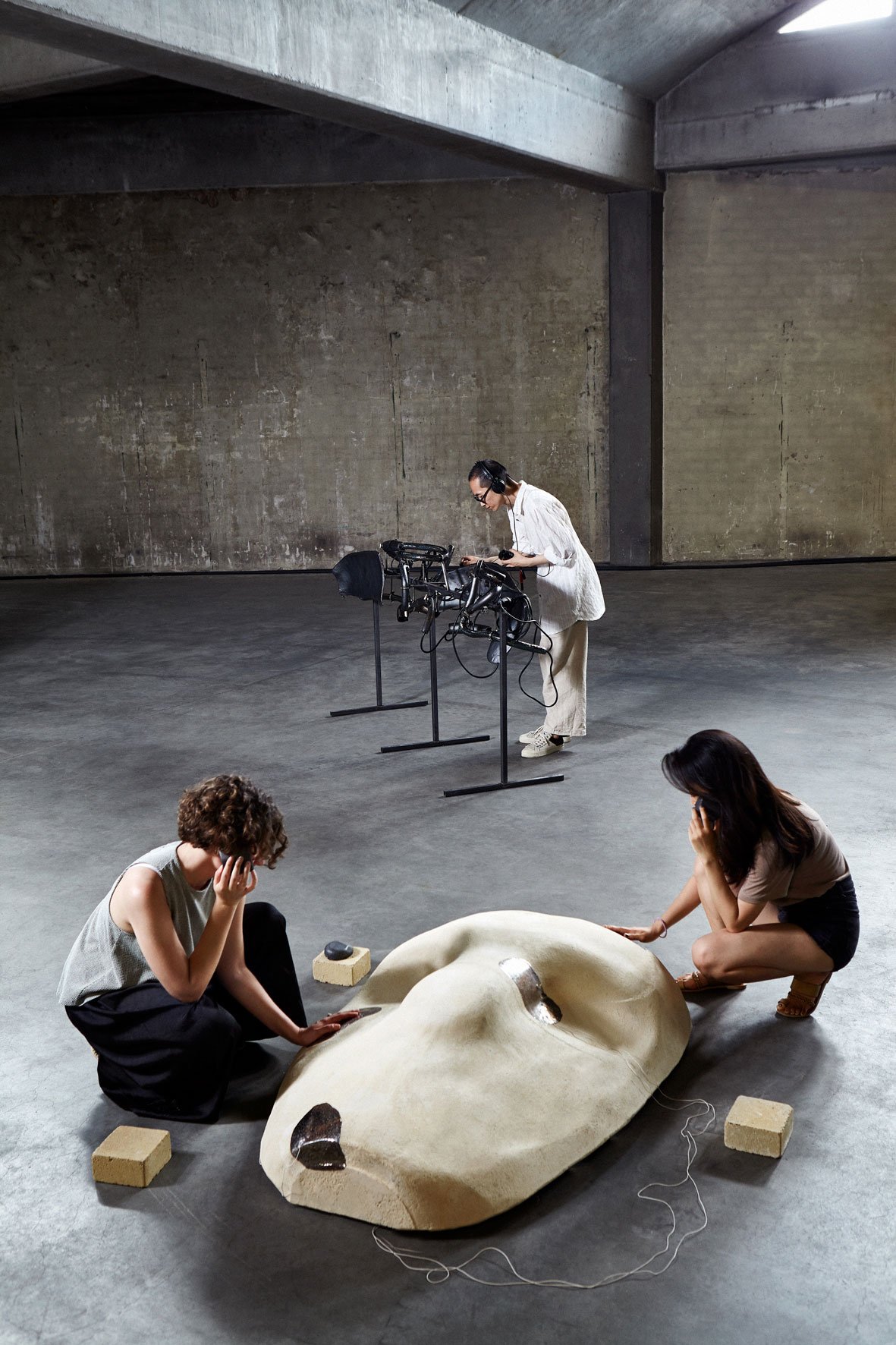
Colette Aliman, The Mechaphony.
Devices for a ‘sonic recalibration lab’ that help us re-engage with the sounds around us, so we are better able to deal with them.
© Design Academy Eindhoven. Photo by Femke Rijerman.
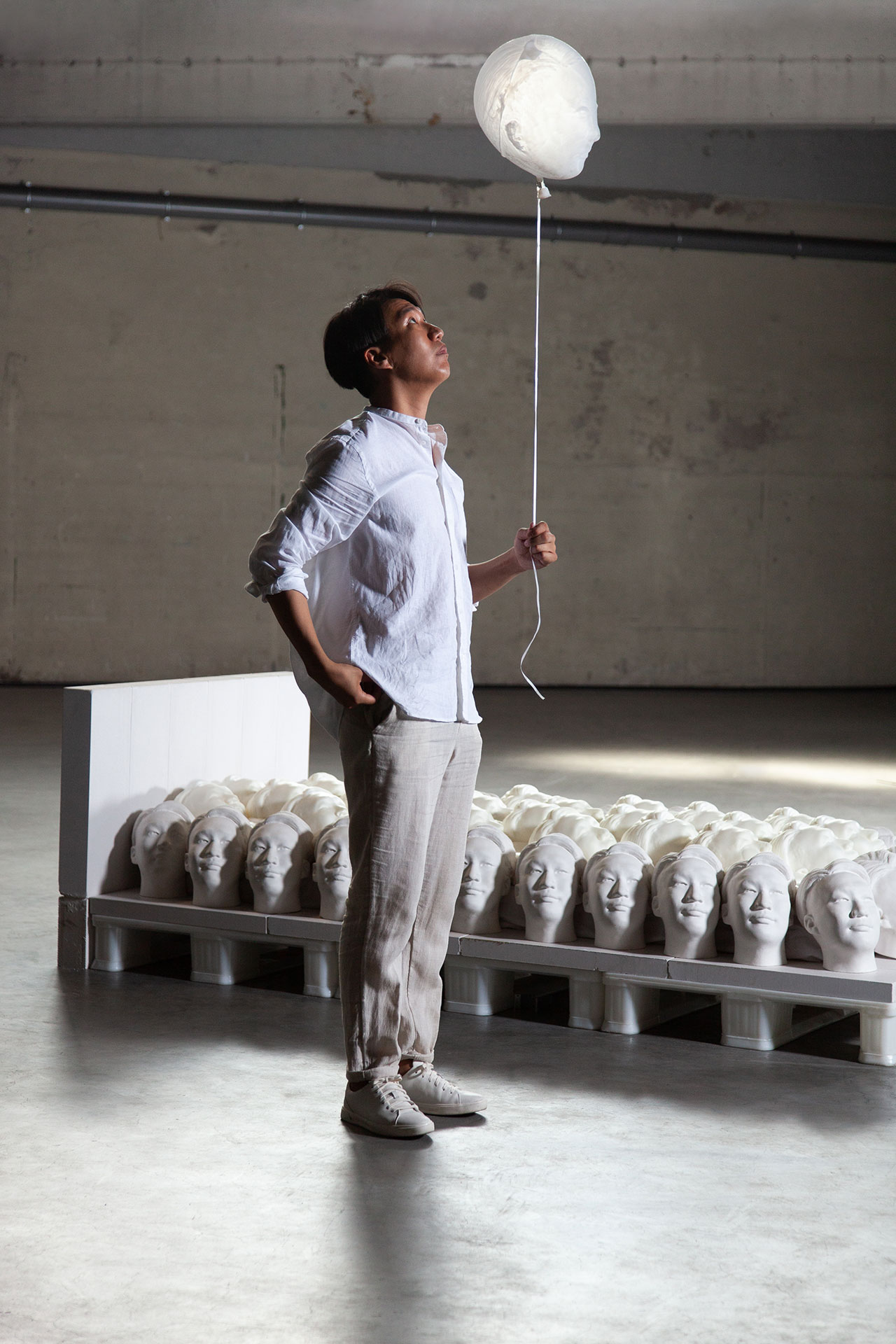
AHN, Ejaculation.
Exploring ways to procreate through objects rather than biology.
© Design Academy Eindhoven. Photo by Iris Rijskamp.
For the second year in a row, the 2019 Graduation Show took over the historic Campina milk factory, a decommissioned 1960s industrial complex on the Eindhoven Canal, where the vast collection of graduate projects were assembled into kaleidoscopic narratives mapping various possible futures of our society. Ranging from the highly conceptual to the shrewdly practical, from technologically ingenuity to innovative craftsmanship, and from socio-political engagement to cultural commentary, the projects on display not only tackle the most pressing issues facing the world of today but also showcase the design talent of the future.
Eschewing conventional disciples such as graphic, interior, industrial or fashion design, the Design Academy Eindhoven structures its graduate and post-graduate courses around “domains of human activity”, focusing not on products but on people who use them, with departments that range from Man and Leisure, Man and Well-being, and Man and Motion, to Social design and Information design. In sticking to this academic structure, the curators of the 2019 Graduation Show mapped out the projects into several cross-departmental groups in order to uncover the creative currents motivating this talented crop of designers.
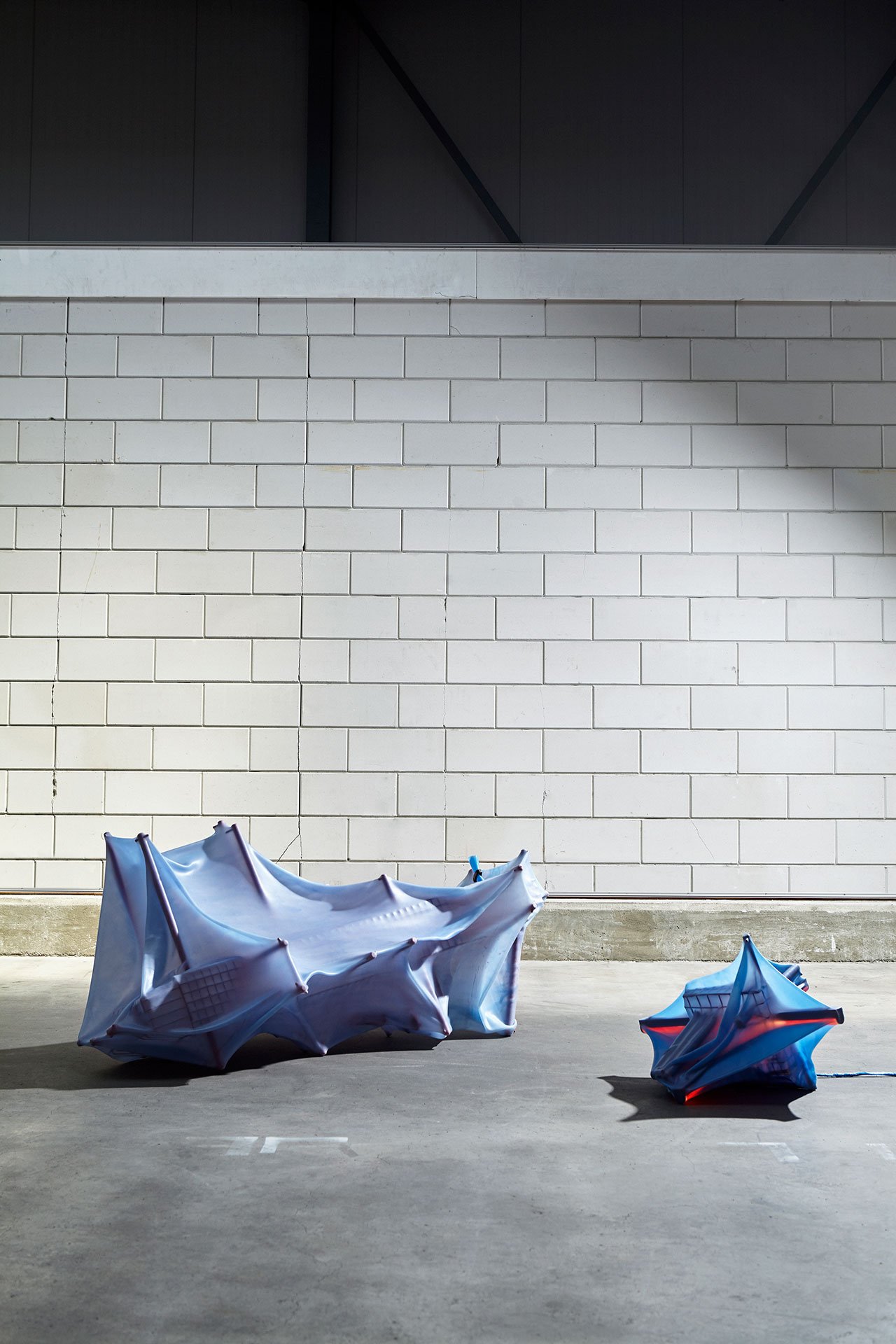
Alex Blondeau, Objectifying Objects.
A shelving unit and lamp is covered by a thin membrane that reveals the inner structure at work.
© Design Academy Eindhoven. Photo by Femke Rijerman.
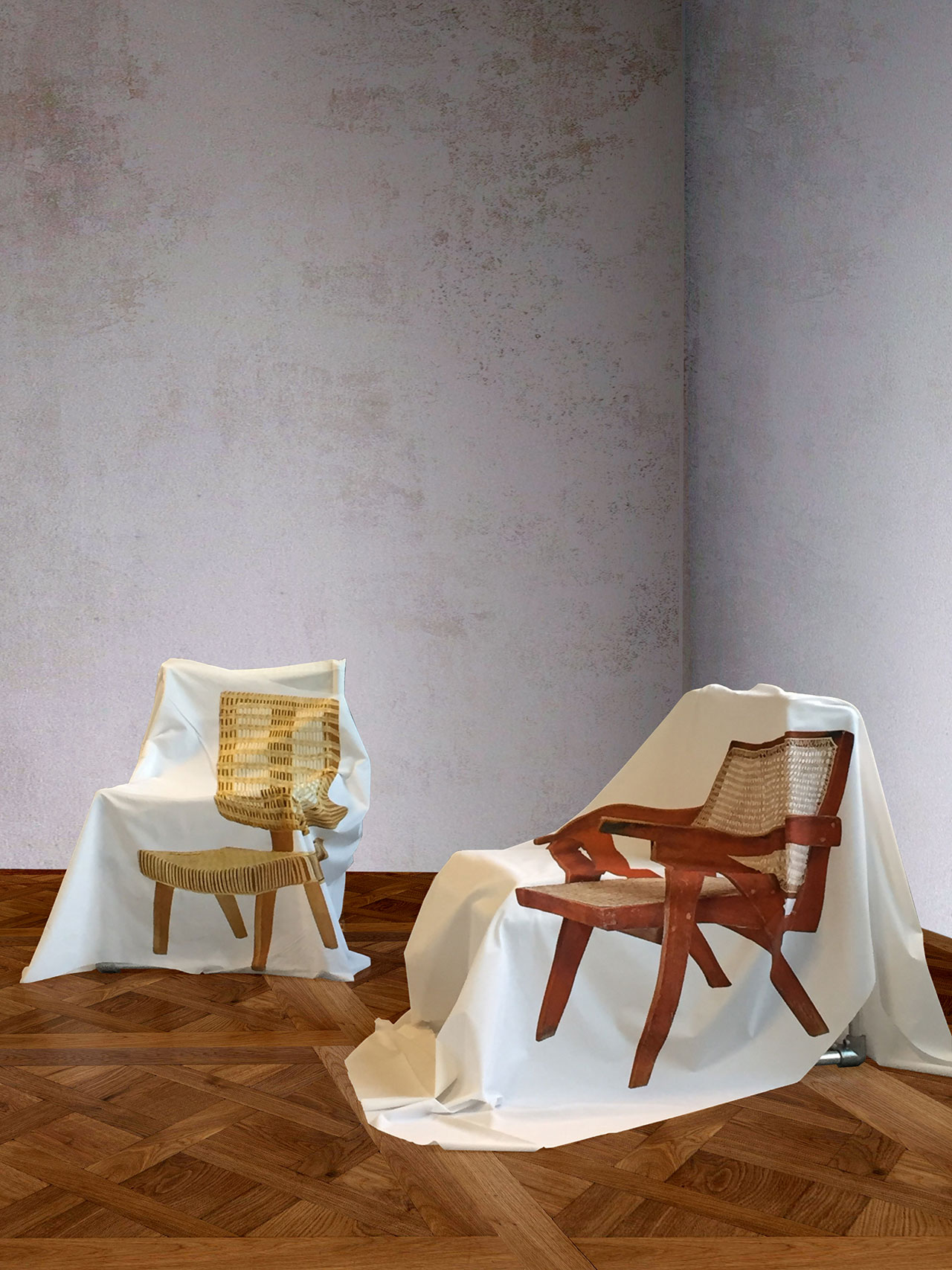
Boris Brucher, Homeset.
A living room as a curated staged decor, built to be a photographic image.
© Design Academy Eindhoven.
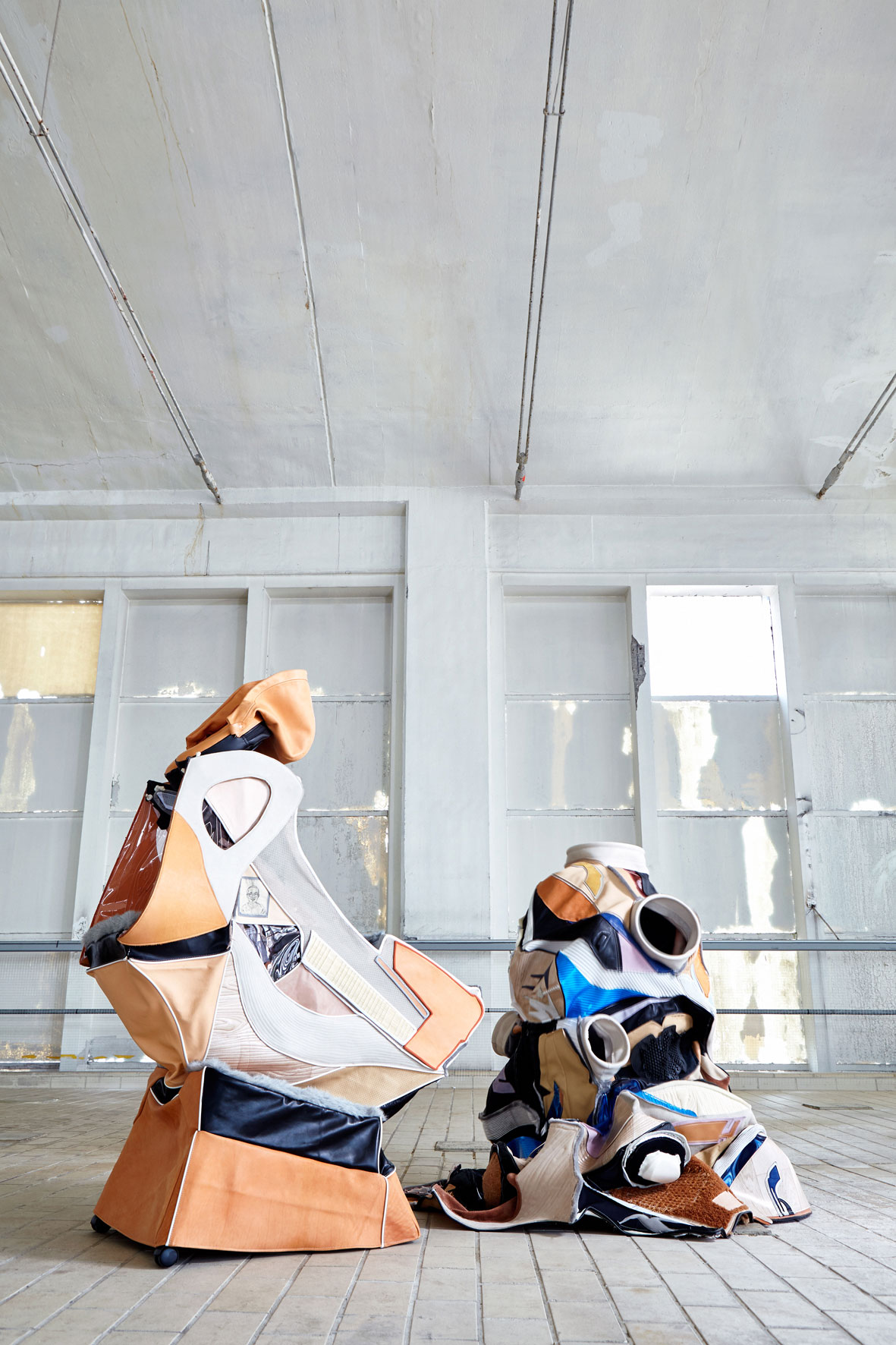
Hansol Kim, Wearing chairs while sitting on pants.
A synthesis of furniture and clothing to go beyond the original features of each.
© Design Academy Eindhoven. Photo by Hansol Kim.
Design Academy Eindhoven was established in 1955 as an institute of industrial design before embracing art, architecture and design in the 1990s, so it’s no surprise that furniture design was at the centre of numerous projects. Inspired by our own bodies, Alex Blondeau explores the anatomy of objects by stretching a thin silicone membrane over shelving units and lamps; when the air is sucked out, the outer skin sticks to the inner structure revealing the skeleton therein. Satomi Minoshima’s leather-covered inflatable furniture extend the boundaries of inflatable products through the use of a durable material such as leather, while Hansol Kim questions the strict boundary between clothing and furniture by merging the two disciplines to create a new kind of hybrid object cheekily titled “Wearing Chairs While Sitting On Pants”.
Other graduates pushing the boundaries of furniture design include Etienne Marc who revises classical pieces with contemporary ornamentation that we normally might ignore, disdain or consider as banal. Orson van Beek who breathes new life into Le Corbusier’s classic LC2 leather armchair by creating a masterfully scrunched up version, Federico Rosa whose furniture collection reflects the effects of high tide in Venice by incorporating molluscs, barnacles and seaweed which he casts into bronze ornaments for their legs, and Paul Coenen whose furniture collection is inspired by the flexibility of sheet metal, shedding the need for glue, screws or welding.
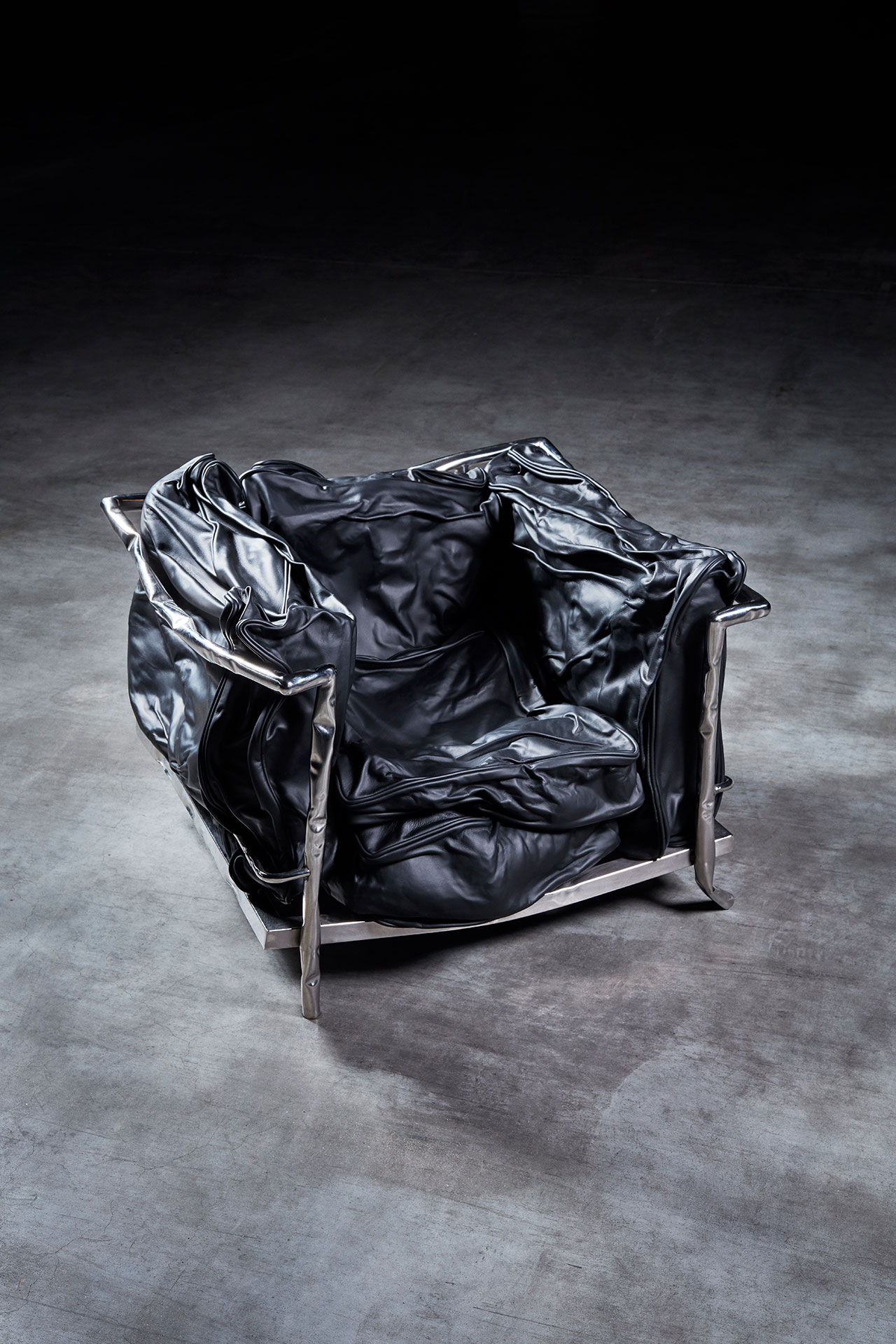
Orson van Beek, Figurative Furniture.
Furniture that refers to and reflects contemporary culture.
© Design Academy Eindhoven. Photo by Ronald Smits.
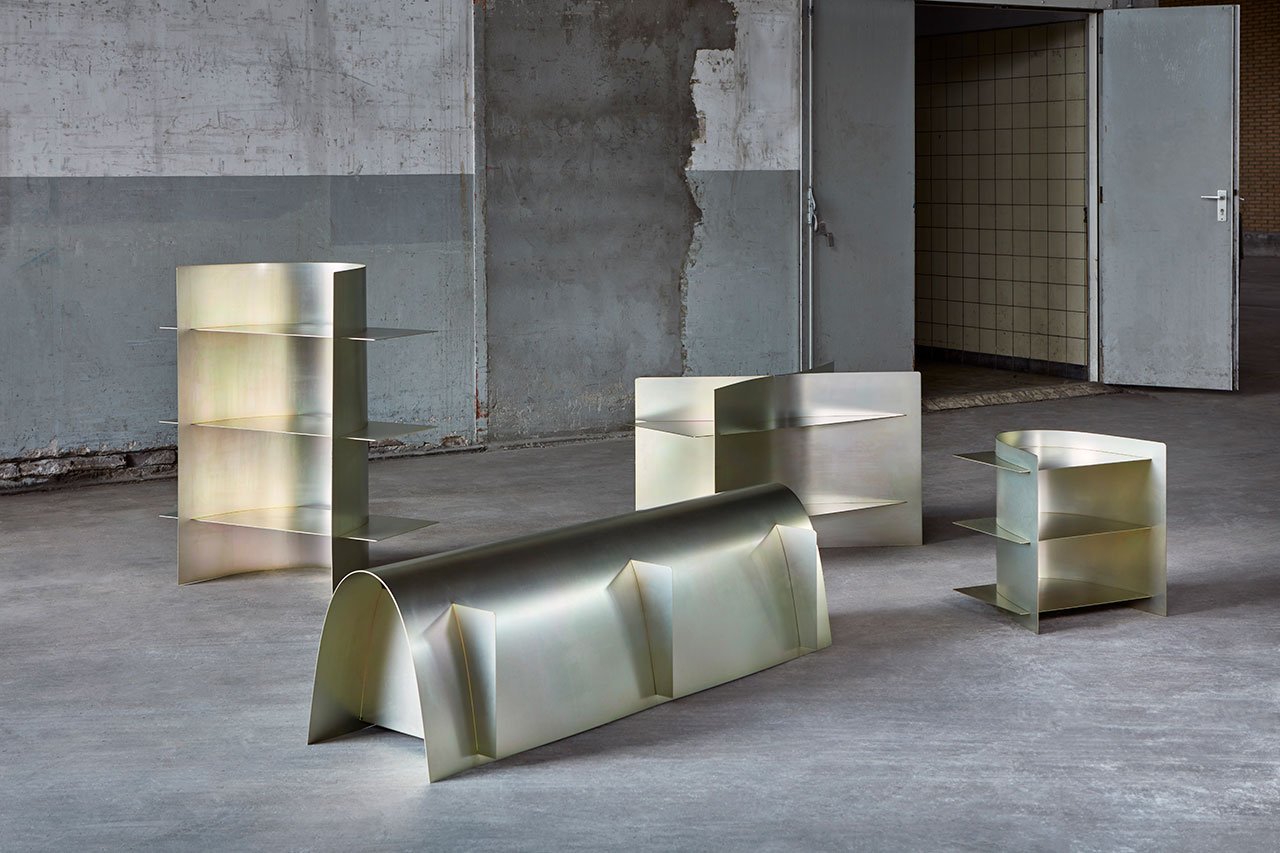
Paul Coenen, Borders of Assembly.
A furniture collection inspired by the flexibility of sheet metal and the standard sizes used in the manufacturing industry.
© Design Academy Eindhoven. Photo by Ronald Smits.
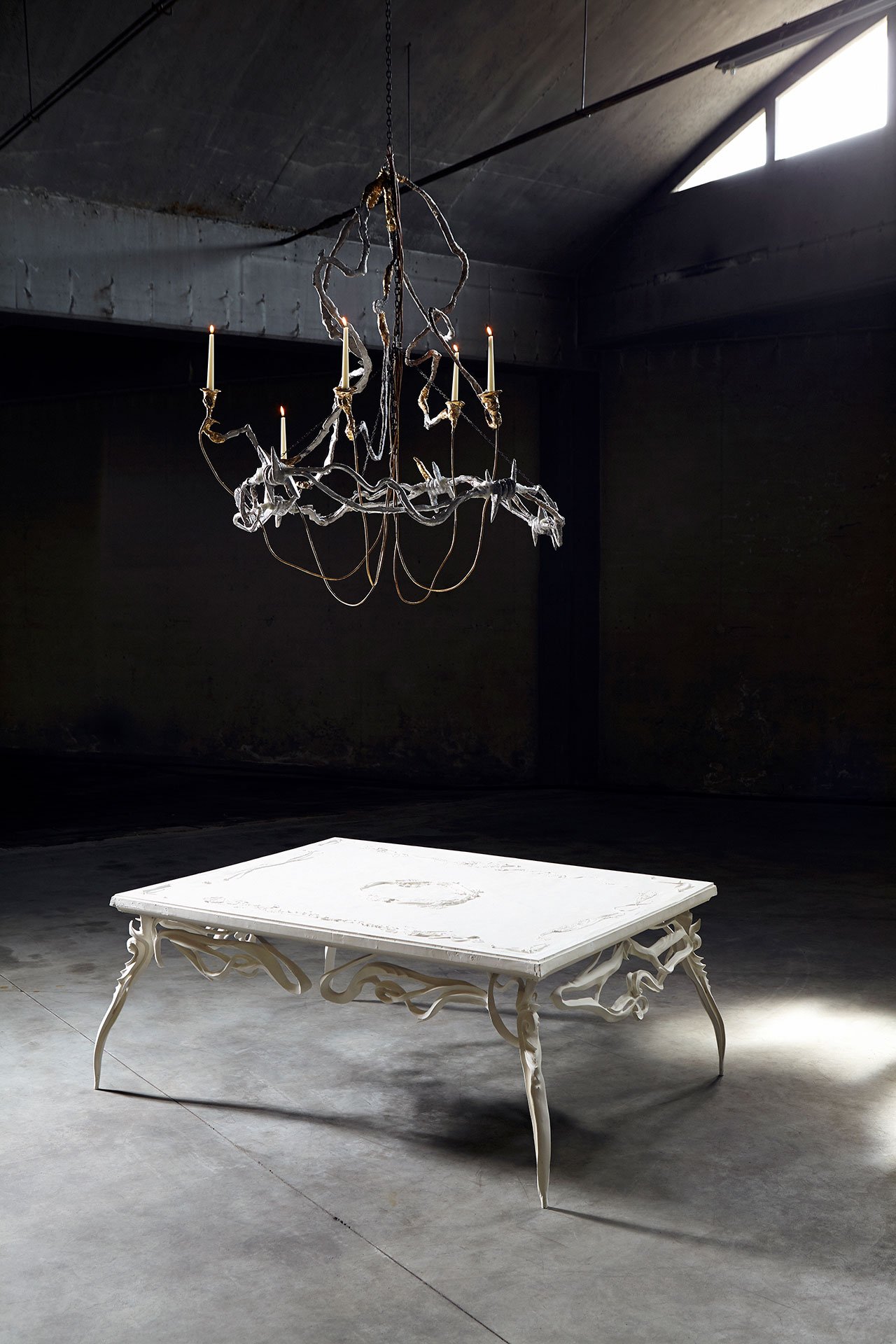
Etienne Marc, Yesterday did not die.
A range of furniture to investigate our appreciation of antique objects.
© Design Academy Eindhoven. Photo by Femke Rijerman.
Furniture pieces are also featured in Boris Brucher’s installation “HomeSet”, albeit in a more conceptual manner. By constructing a room out of scaffolding which are draped over with images of popular furniture like Jeanneret chairs and Perriand stools that social media stars love to showcase, he illustrates the gap between representation and reality in our digital, image saturated world. As conceptually intriguing are Ismaël Rifai’s series of objects whose surreal design is inspired by the semi-legal trade across the border of Spanish enclave Ceuta in Morocco, which requires special techniques for packing and carrying goods, and the furniture collection by Italian designer Gianmaria della Ratta produced by combining the traditional production process of pasta making with 3D modelling, rapid prototyping and new materials in an effort to subvert the stereotype of Italian identity.
Dorian Renard challenges our prejudices about humble materials such as plastic by subverting traditional crafting techniques associated with precious artefacts. By sculpting plastic as if it were glass, Dorian creates beautifully shaped objects that eschew the industrial dullness of typical plastic products for a twisted, warped plasticity that imbues the material with allure. Johanna Seelemann also uses a humble, expandable material, in this case industrial modelling clay which is commonly used in car design, to create objects that can be infinitely restyled by the user as an act against rampant consumerism, while Pauline Esparon explores the untapped potential of flax by taking advantage of the sheen, softness and expressiveness of the natural fibre which predominantly grows in Normandy but is mostly exported to China.
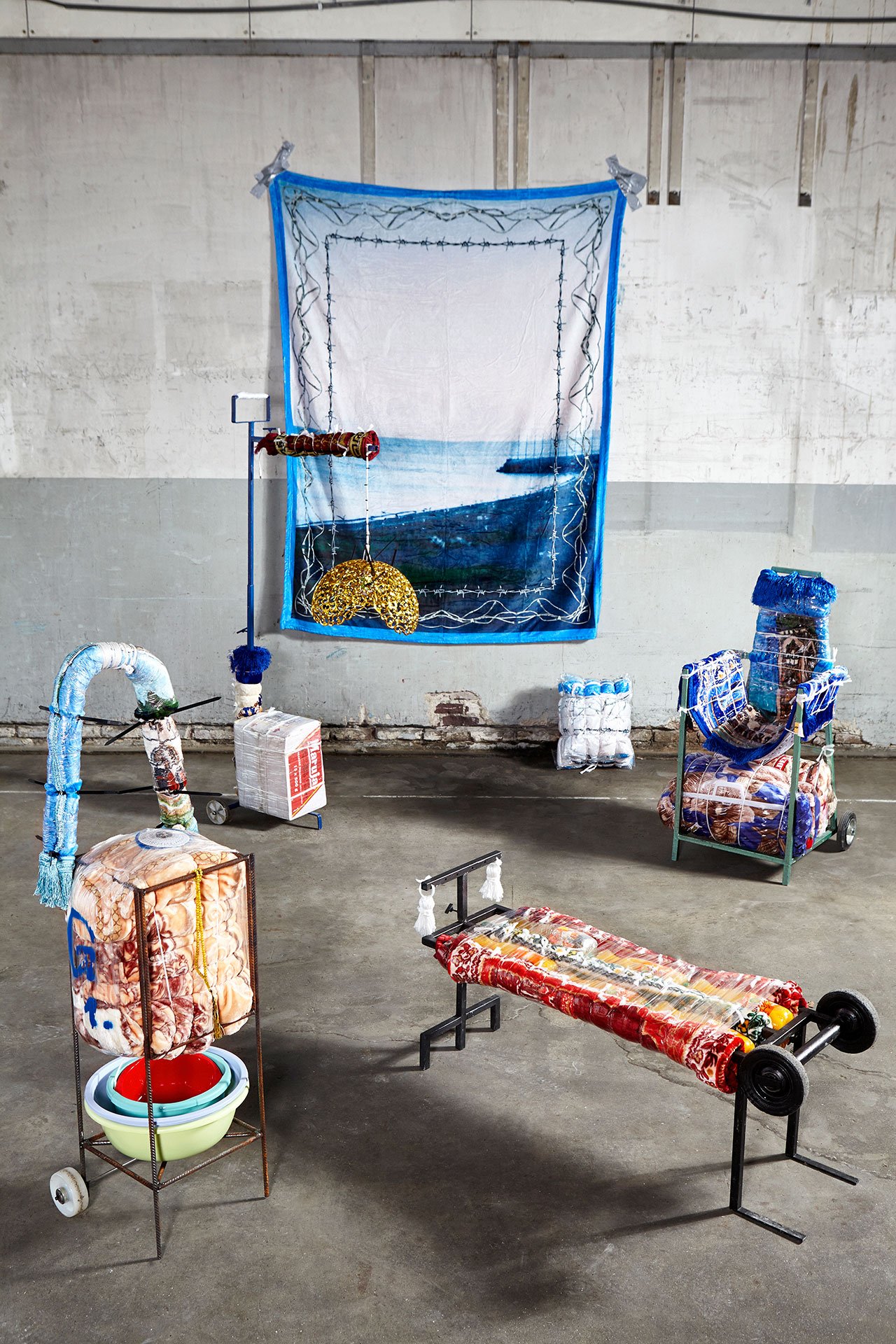
Ismaël Rifai, Border as producer of design.
The semi-legal trade across the border of Spanish enclave Ceuta in Morocco inspired Ismaël Rifai to develop a series of objects ‘designed’ by the border.
© Design Academy Eindhoven. Photo by Femke Rijerman.
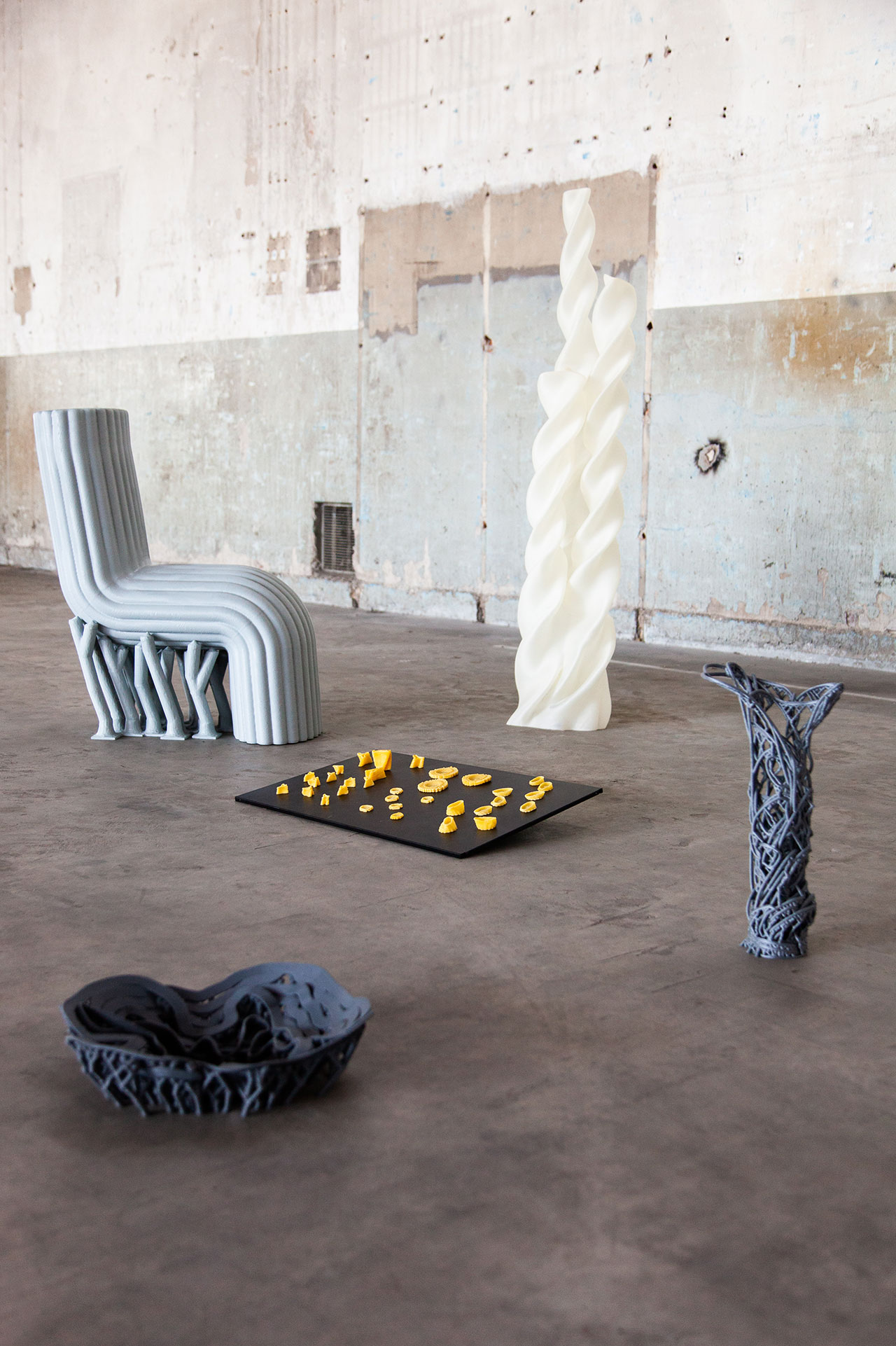
Gianmaria Della Ratta, Pasta Shootah.
This project takes the industrial method of extruding pasta and translates it into the world of 3D software, breathing new life into a stagnant tradition.
© Design Academy Eindhoven. Photo by Iris Rijskamp.
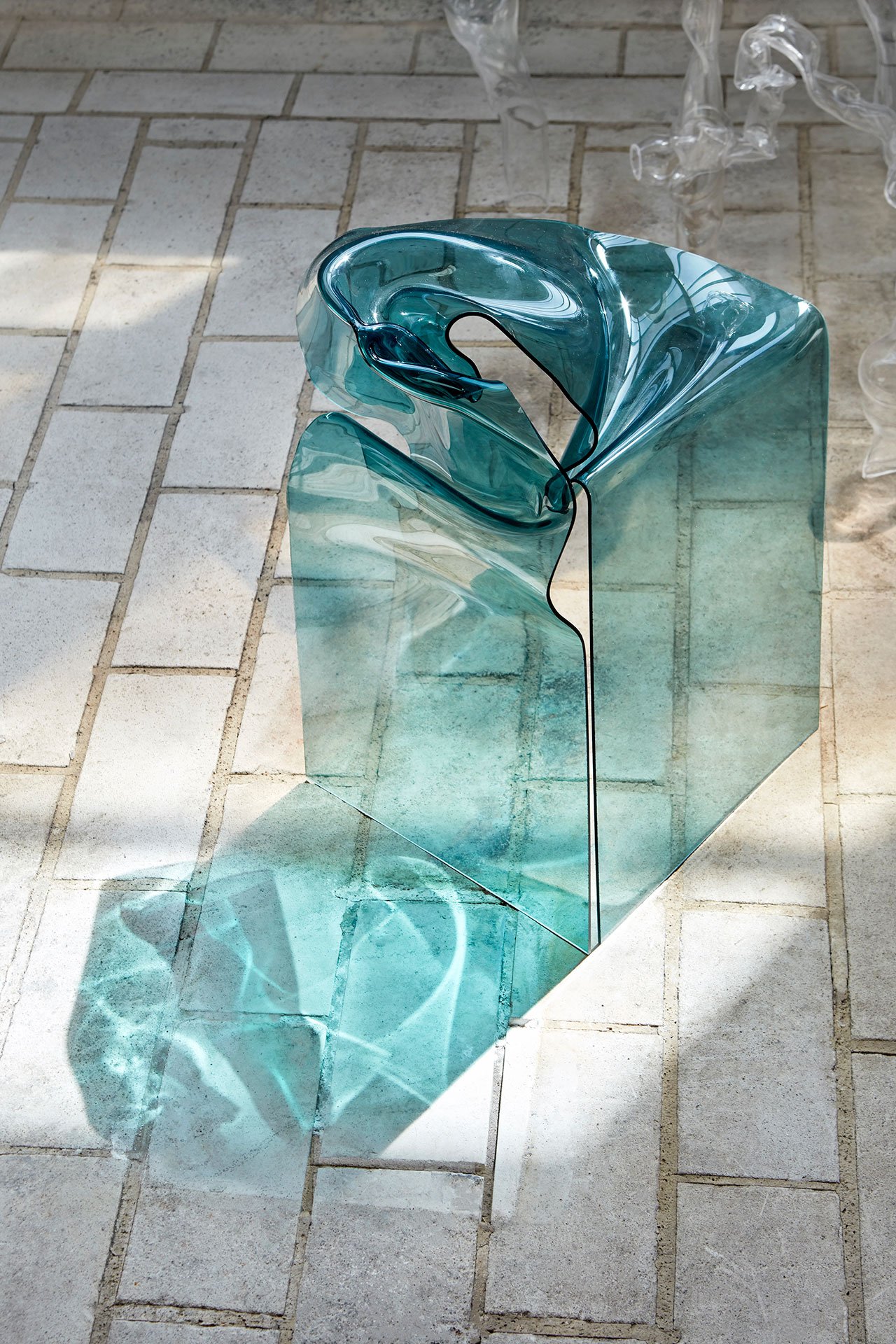
Dorian Renard, The Beauty of Distortion.
‘The Beauty of Distortion’ is a study on how our prejudices about materials can be altered through subversive use of crafting techniques, resulting in a series of elegant plastic objects.
© Design Academy Eindhoven. Photo by Ronald Smits.
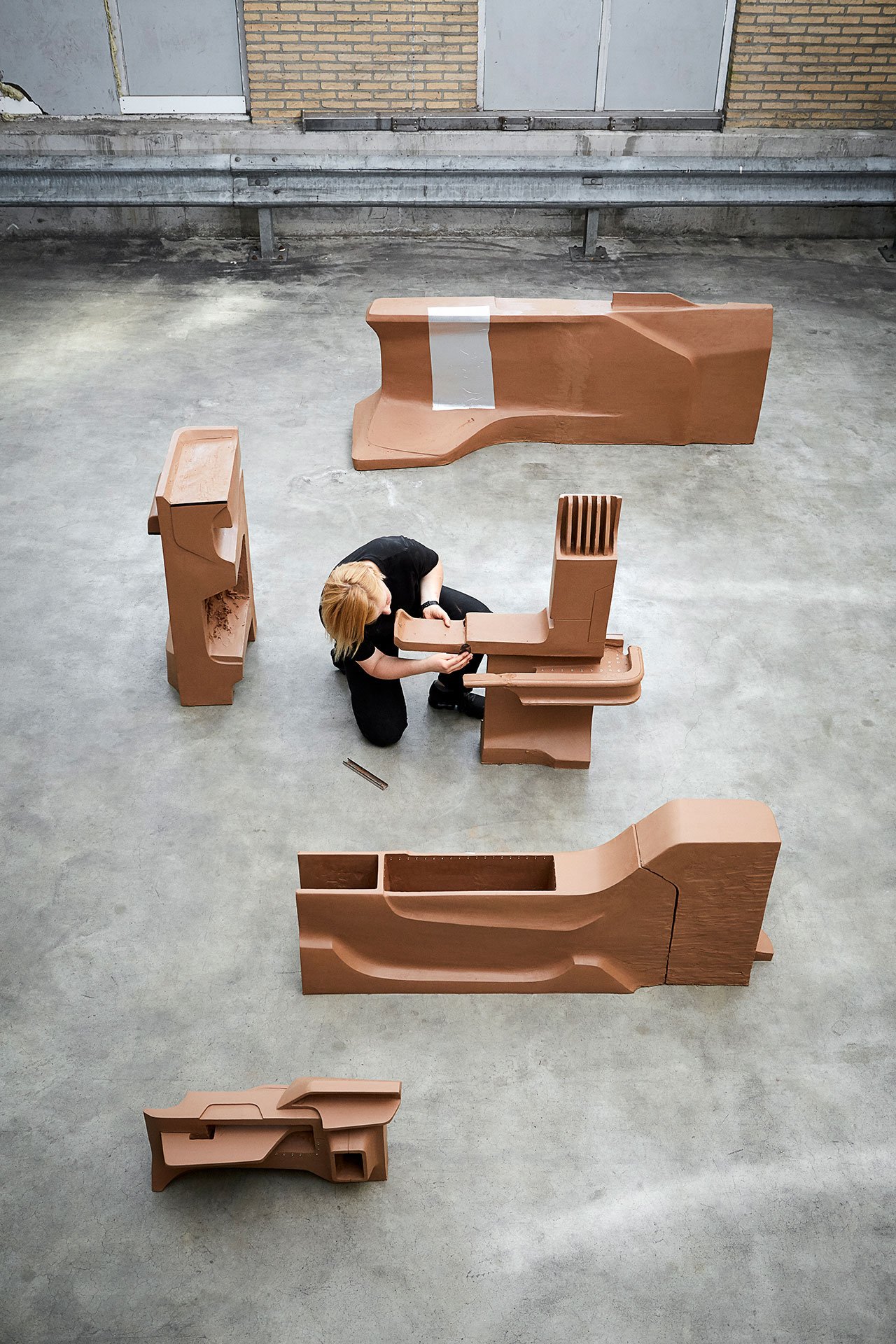
Johanna Seelemann, Terra Incognita.
Sculpting a new path towards adaptable design.
© Design Academy Eindhoven. Photo by Nicole Marnati.
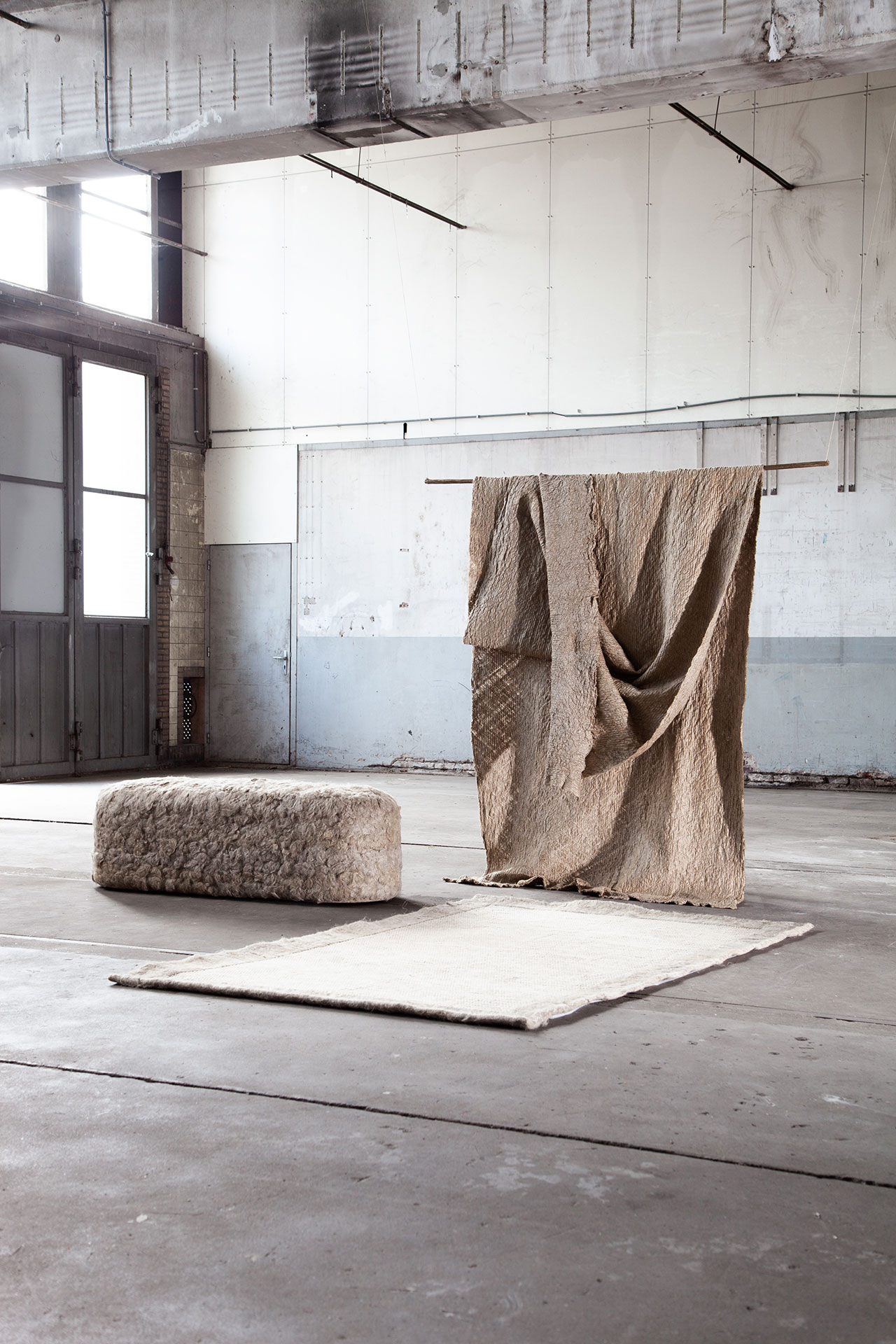
Pauline Esparon, L’ÉCOUCHEUR.
An investigation into the untapped potential of flax.
© Design Academy Eindhoven. Photo by Iris Rijskamp.
Whereas the aforementioned designers worked with materiality, others explored more intangible concepts. Colette Aliman recalibrates our relation to our sonic environment through two ceramic interfaces that allow users to re-engage with everyday sounds, Ahn Sung-Hwan whimsically explores ways to procreate through objects rather than biology by releasing 3,000 balloons of his face and building a bed from copies of his head, and Vera van der Burg investigates what happens if machine-learning algorithms are trained to become subjective.
Héloïse Charital asks “When is white, white enough” to highlight the paradox of the museum as both a repository and producer of knowledge. Through an animated diorama, Héloïse gives a fresh perspective on the various appropriations of Greek marble sculptures to question the deep-rooted yet false assumption of their whiteness which has been used to perpetuate racist and nationalist ideas. Historic artworks are also at the heart of Lara Chapman’s project “through the emoji looking glass” where the art collection of the Rijksmuseum is interweaved with the world of emojis, while Dimitry Suzana takes a stance on the ethical debate around end of life choice by his encasement gesture that parallels the cruelty of denying someone trapped in their body a way out, while Paisley Fried visualises the physical sensations of mental illness by using textiles and clothing to simulate symptoms such as incessant tingling, excessive weight, smothering and discomfort within your skin.
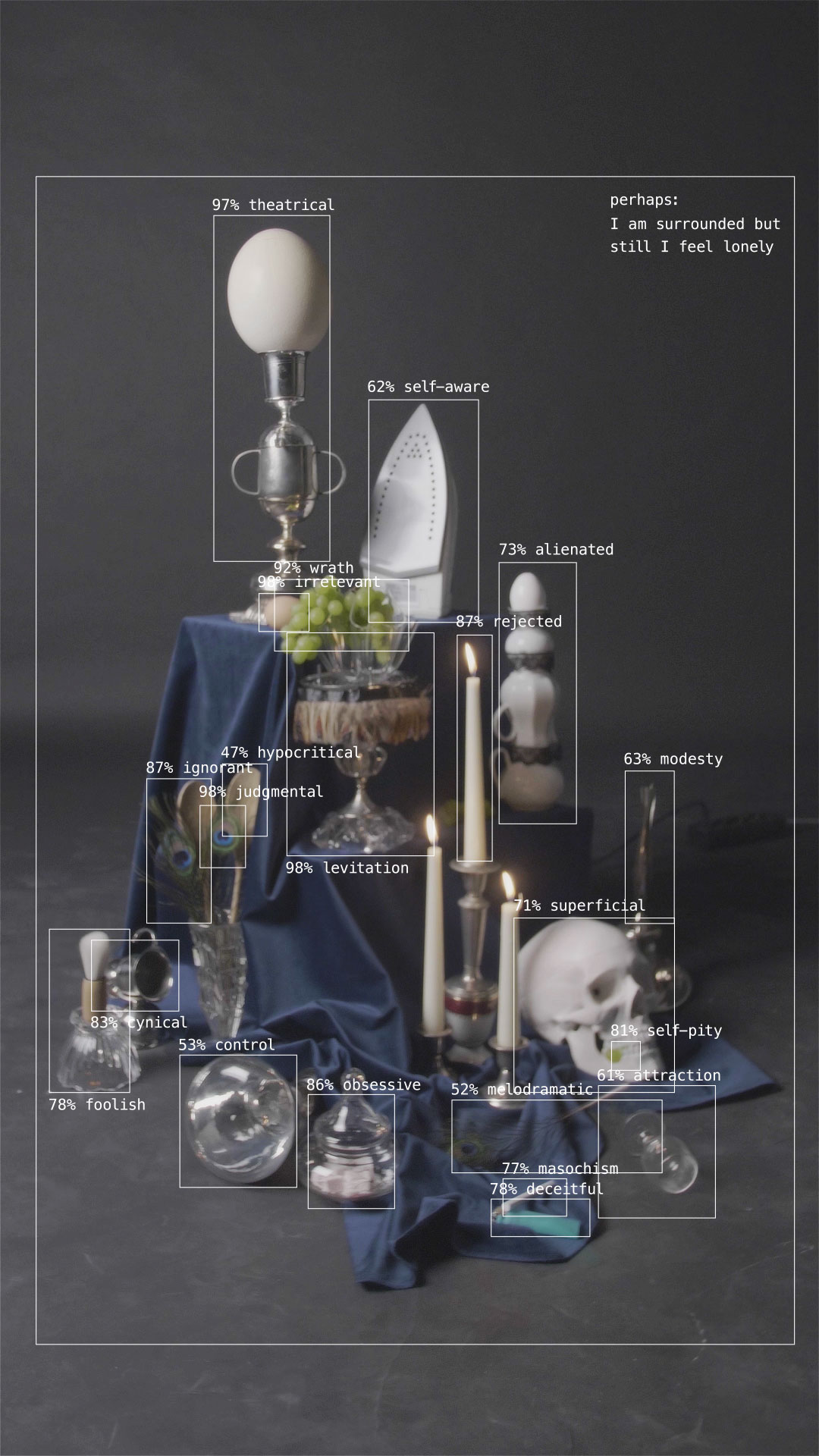
Vera van der Burg, Still Life.
An exploration of what happens if machine-learning algorithms are trained to become subjective.
© Design Academy Eindhoven. Photo by Nicole Marnati.
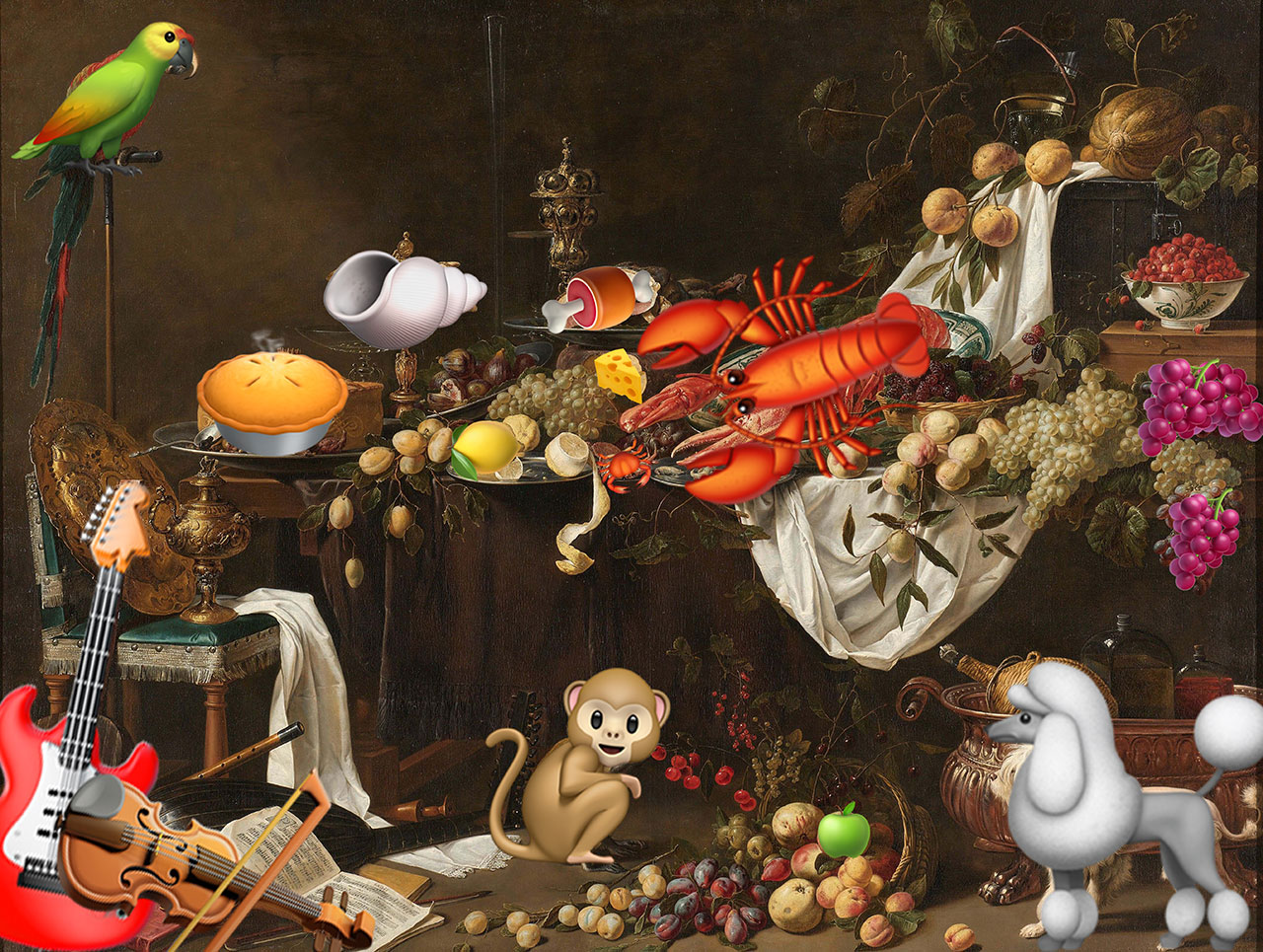
Lara Chapman, Through the emoji looking glass.
An augmented tour exploring the parallel cultural battles and contradictions between the collection of historic artworks of the Rijksmuseum and emojis.
© Design Academy Eindhoven. Photo by Ronald Smits.
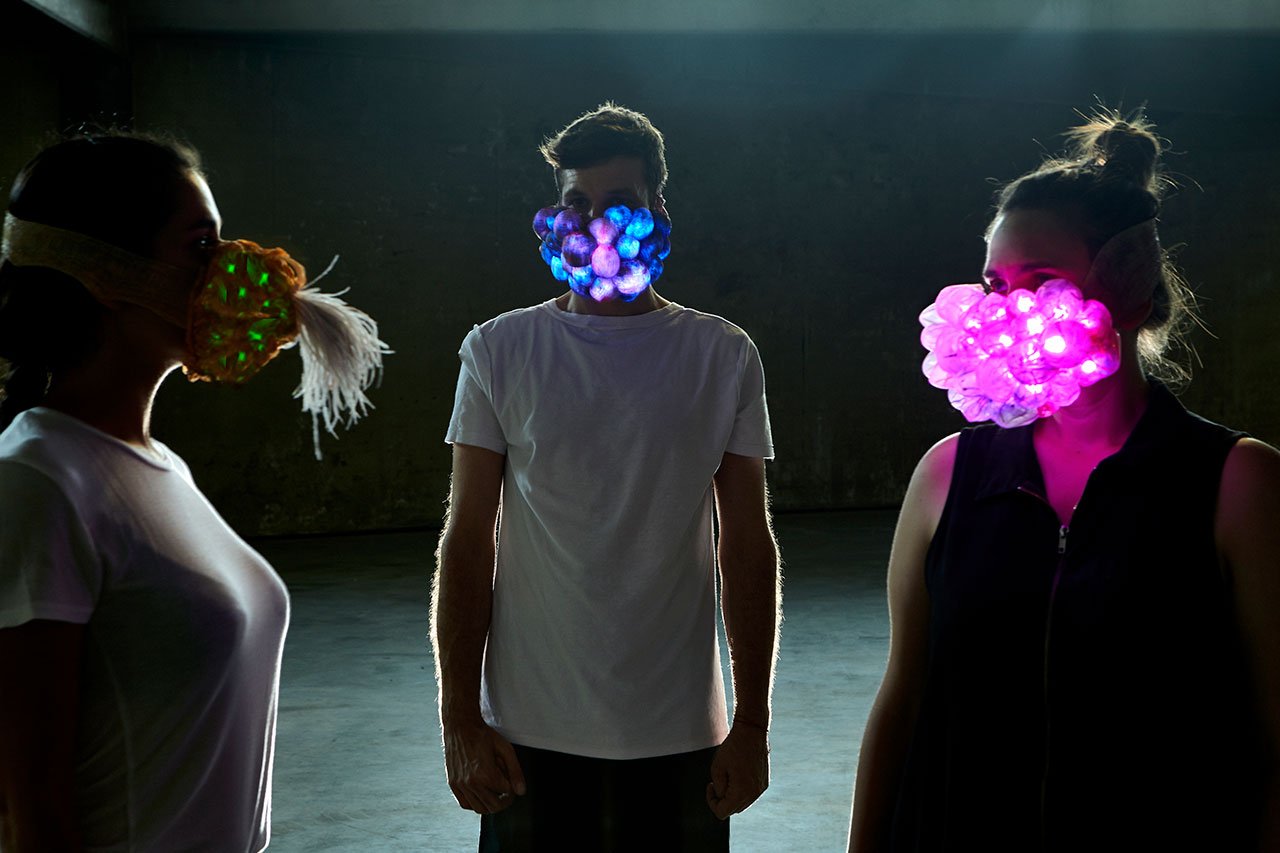
Valerie Daude, Microbial Self.
A mask with an integrated breath test that measures, analyses and visualises our physical and mental health with every breath.
© Design Academy Eindhoven. Photo by Femke Rijerman.
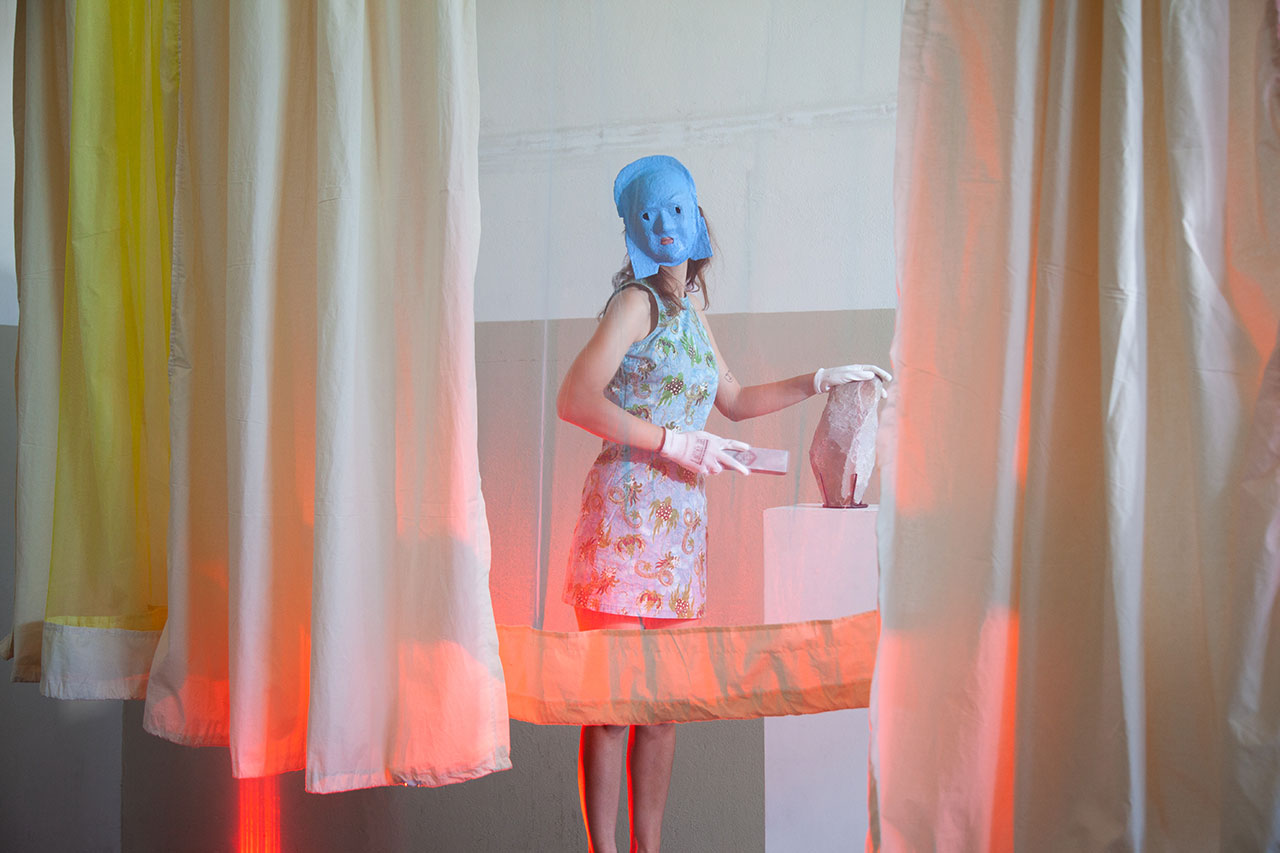
Heloise Charital, When is white, white enough?
Investigating the paradox of the museum as both repository and producer of knowledge.
© Design Academy Eindhoven. Photo by Iris Rijskamp.
Projects that caught our eye for their craftsmanship and finesse include: Eva Oyevaar‘s coloured glassware that can be stacked in endless combinations to create new hues supplement their functional role with aesthetic gratification, Sandra Janssen’s elegant sex toys made of glazed ceramics and metal accents that can double as beautiful decorative objects, and Tadao Ando and Luís Barragan-inspired Luiza Guidi Tomio’s steel frame light fittings that can be opened like a window.
Some of the most innovative projects include a mask with an integrated breath test that measures, analyses and visualises our physical and mental health with every breath by Valerie Daude, an investigation by Marie Declerfayt on the possible use of vegetal matter to replace human organs such as for example human bones by poplar wood, a series of kitchen utensils that leak vital elements into our food and drinks by Jennifer Maier – think a ginger grater that takes care of your body’s need for iron or a coffee filter that provides the essential copper ions – and Sibren Drenthen’s animated wallpaper whose floral patterns change from grey to white courtesy of the heat-sensitive thermo-chromic yarn it’s made out of.
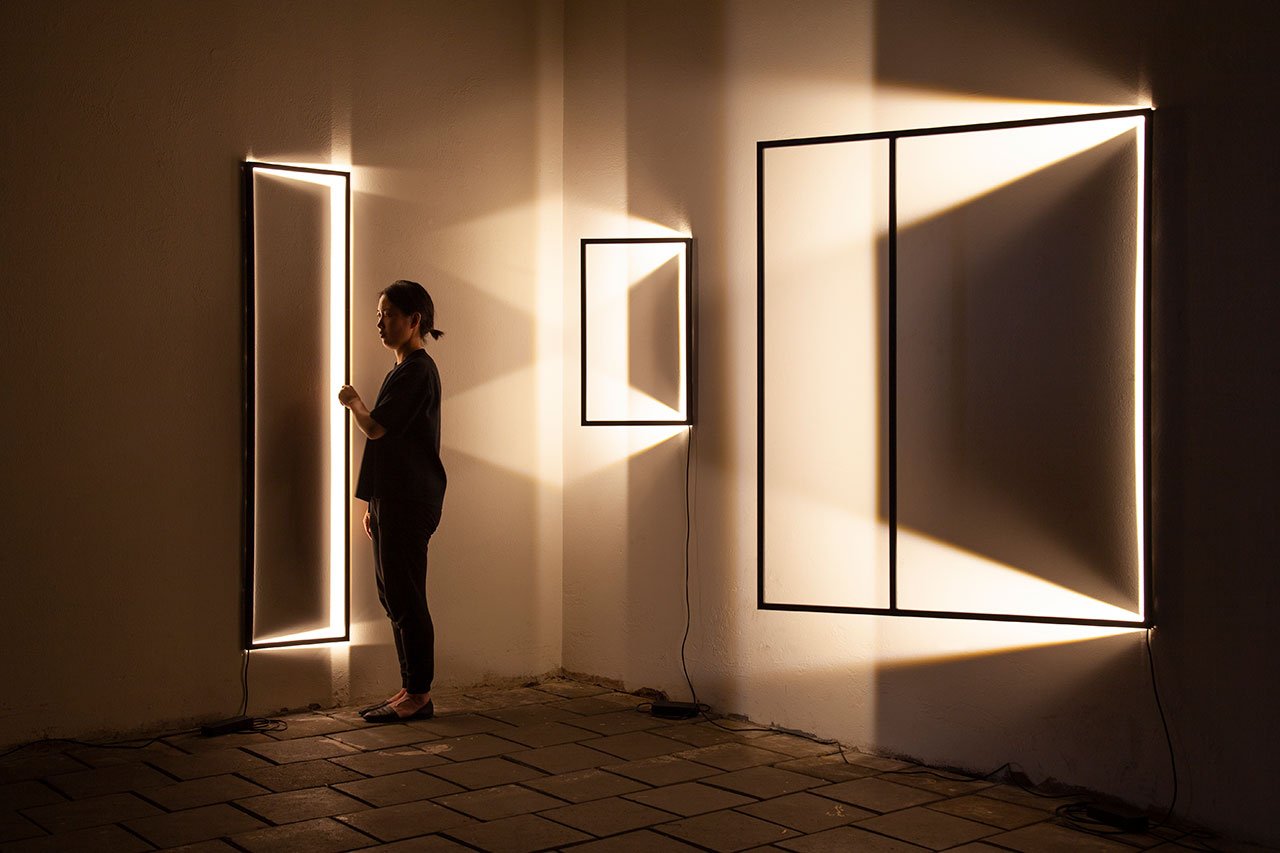
Luiza Guidi Tomio, MĀYĀ.
A different view on lamps. By changing their position these frames allow you to play with light and shadow.
© Design Academy Eindhoven. Photo by Iris Rijskamp.
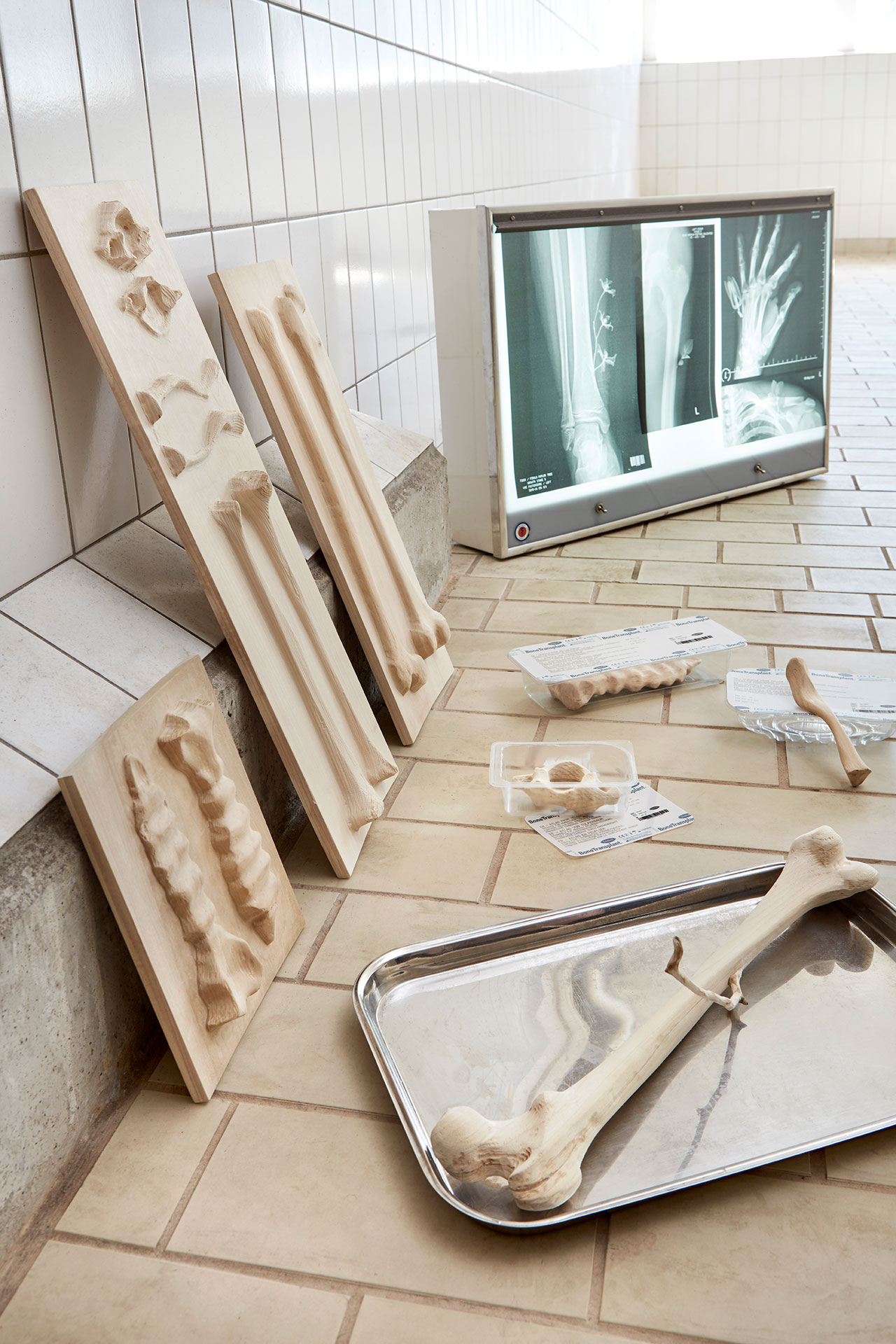
Marie Declerfayt, Botanical Bodies.
‘Botanical bodies’ investigates the possibility to use plants for the creation of human compatible organs.
© Design Academy Eindhoven. Photo by Ronald Smits.
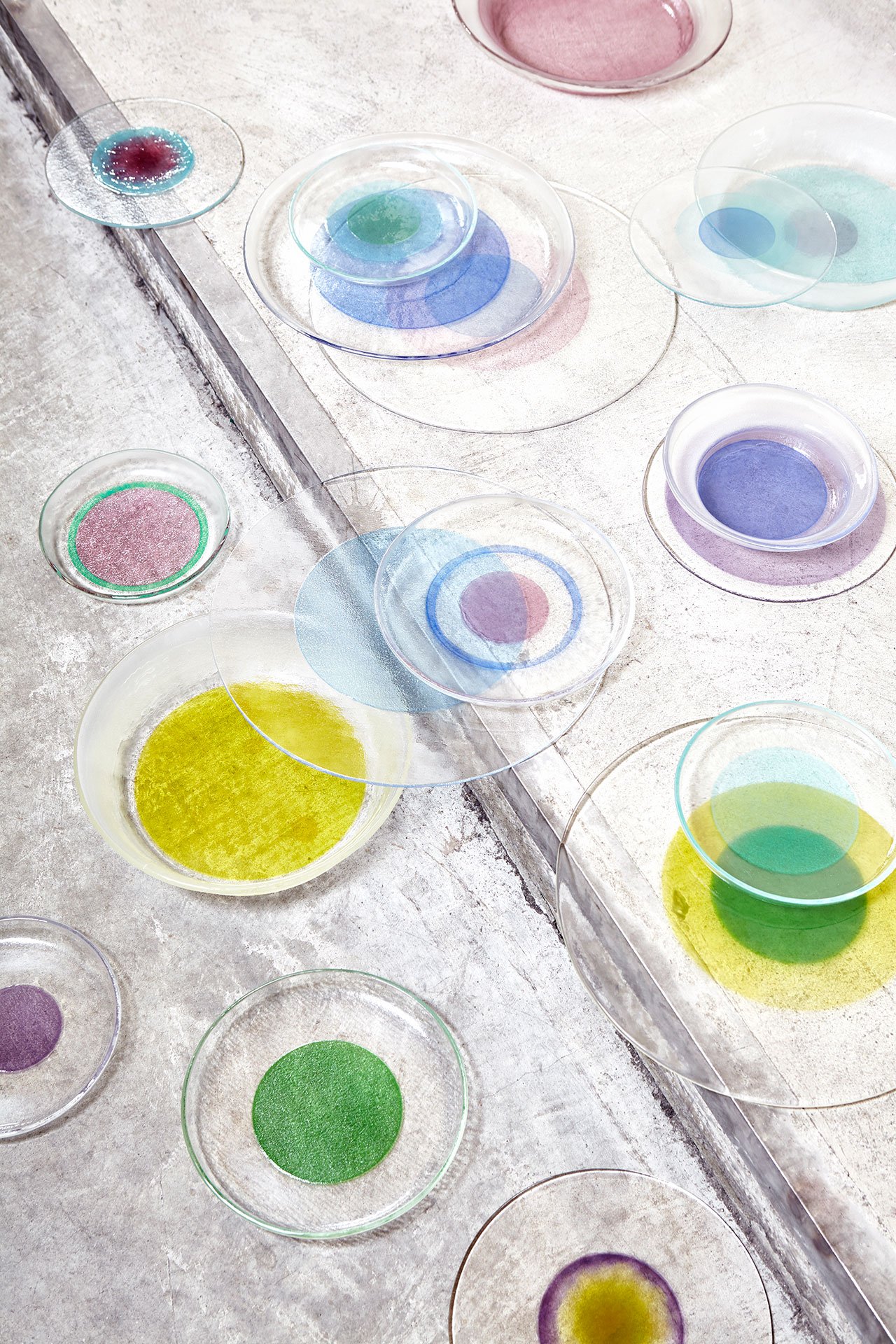
Eva Oyevaar, Aperitif.
Coloured glassware that can be stacked in endless combinations to create new hues.
© Design Academy Eindhoven. Photo by Femke Rijerman.
As expected, sustainability is at the forefront of the academy’s emerging designers who tackle environmental issues with wit and innovation. Jetske Korenromp devised a new ecological packaging material by processing discarded flowers into an all-natural gift wrap for fresh bouquets, Carissa Ten Tije came up with creative ways to use ‘bottom ash’, the non-combustible, lifeless residue produced when household waste is burned in waste-to-energy-plants, which she turns into a terrazzo-like stone material or wood stain, and Sun Lee uses biodegradable fabric and paper to design handmade garments inspired by her Korean heritage.
As diverse and disparate as they appear, and as wide-ranging the issues they tackle are, the projects on display are united by their commitment to serve man and society, demonstrating how the road to the future is being paved by the work of a community of visionary designers.
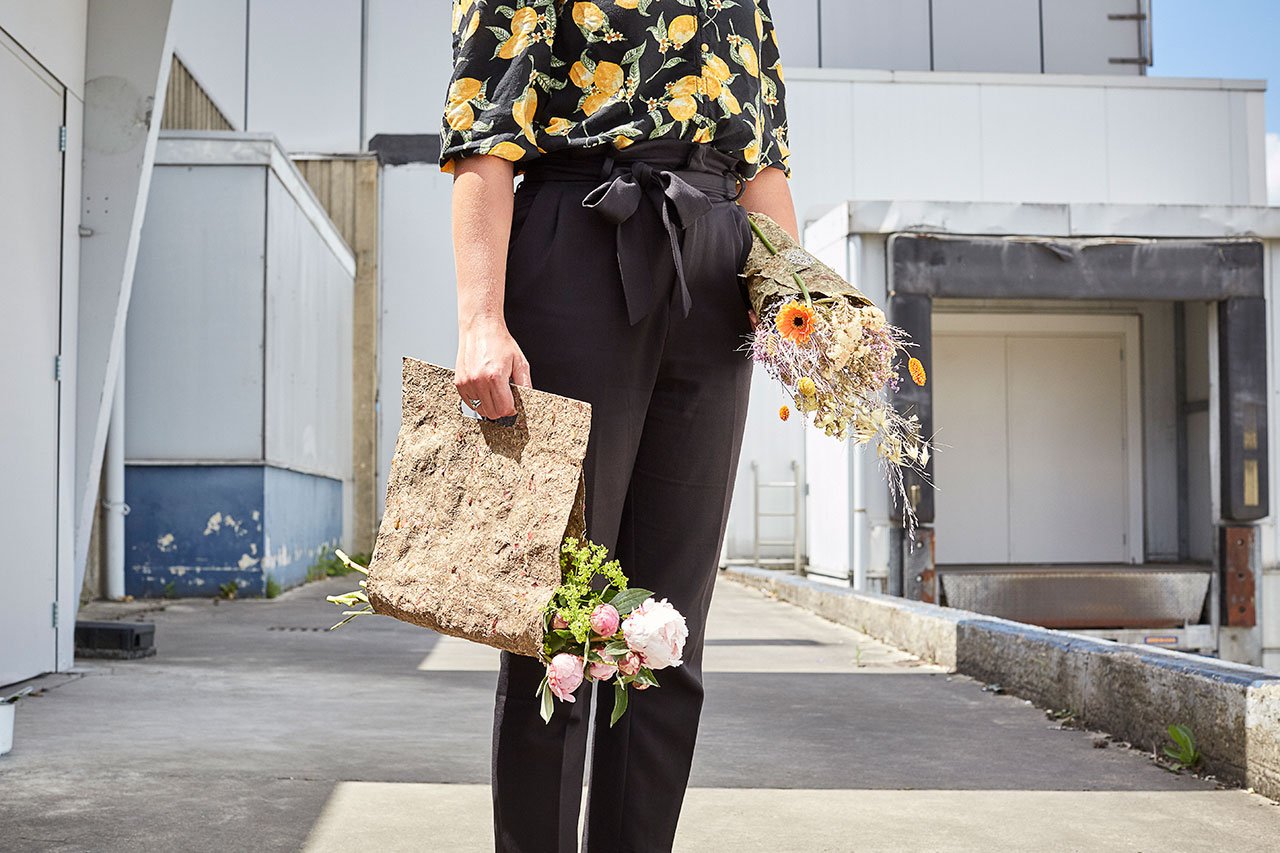
Jetske Korenromp, Rebloom.
A new ecological packaging material for flowers: ‘Rebloom’ gives leftovers from the flower auction and withered bouquets a second life.
© Design Academy Eindhoven. Photo by Nicole Marnati.
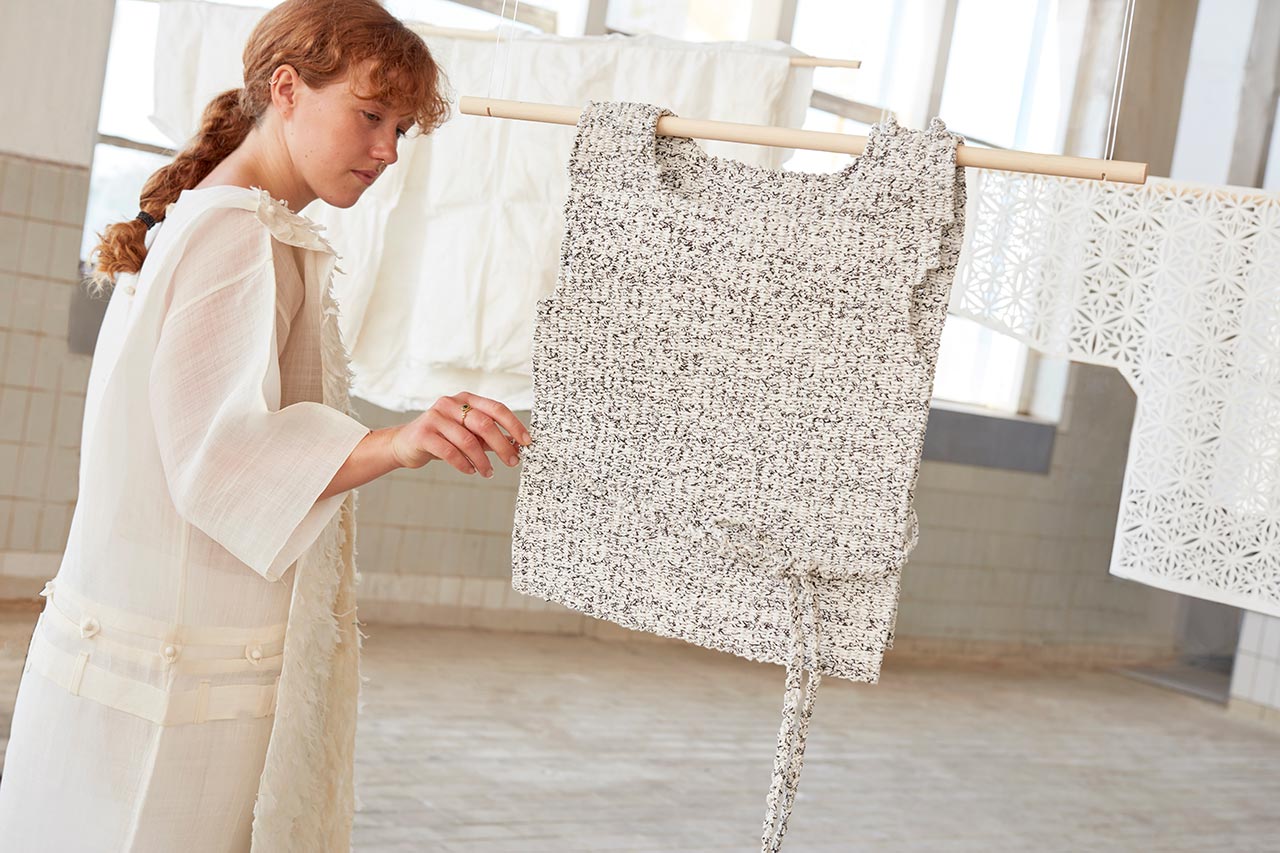
Sun Lee, Consumption of Heritage.
A clothing collection made of Hansan-Mosi fabric and Hanji paper that appropriates Korean heritage.
© Design Academy Eindhoven. Photo by Ronald Smits.
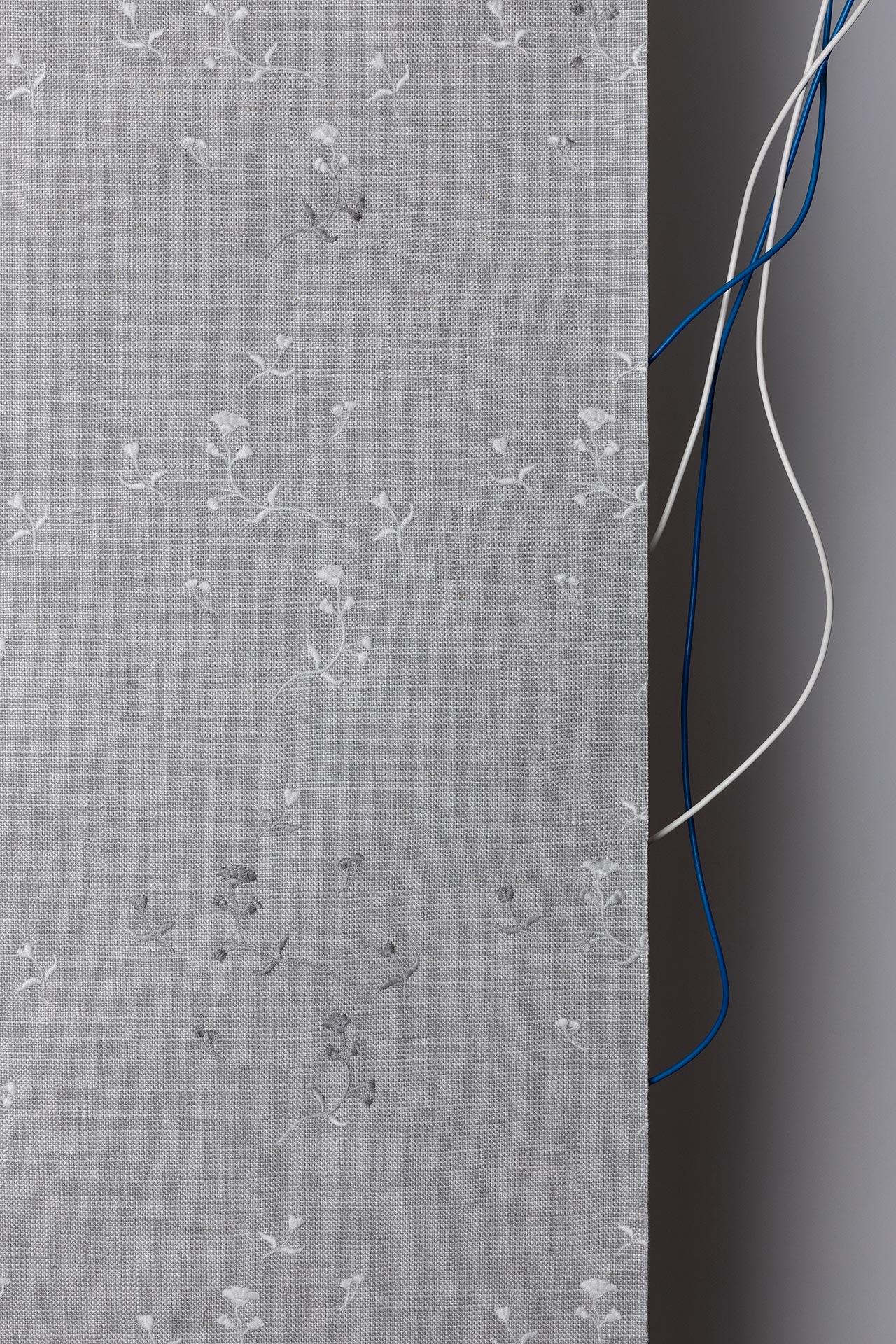
Sibren Drenthen, Wallpaper 3.0.
Animated wallpaper to make the home environment more dynamic and interactive.
© Design Academy Eindhoven.
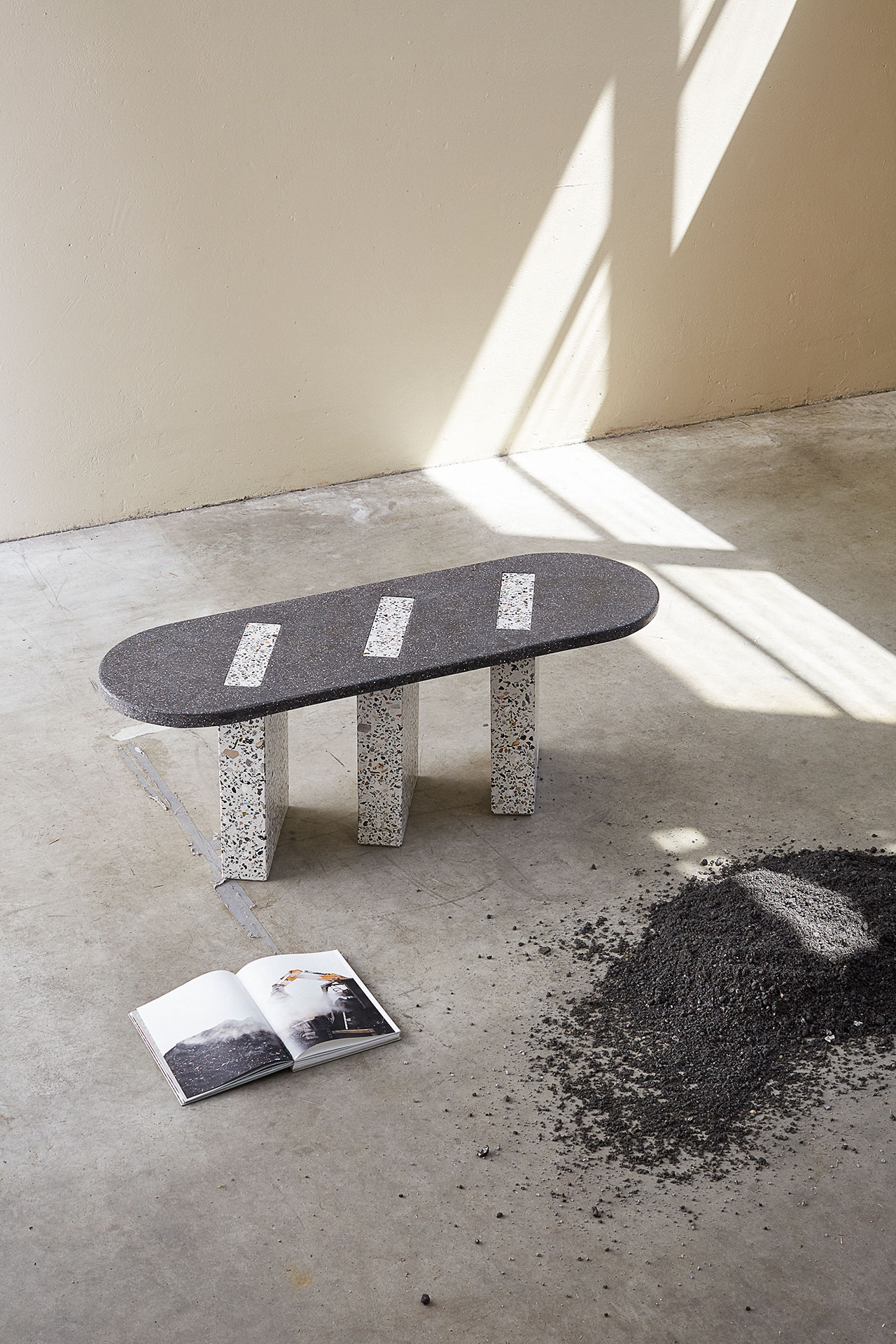
Carissa Ten Tije, Bottom Ash.
What happens to our waste when it leaves our homes? This question led to a study into the possibilities of using bottom ash as a resource.
© Design Academy Eindhoven. Photo by Nicole Marnati.

















